#one of the main themes of this campaign is truth vs perception
Note
I don't know if anyone's asked already, if yes I didn't see it, but I would absolutely love to hear about your fairy tale murder mystery!
no one has recently (unless my notifications have gobbled it up), so thanks for the ask! i posted about it a while ago when i was still worldbuilding, but now we’re at about the midpoint (or a little further) of the game, so it’s a great time to catch you up! i won’t give you details cause it’s complicated but here are the vibes:
Book 1: A Tangled Web
We open in the tiny kingdom of Kiatar, sandwiched between several larger countries and the encroaching forest of the feywild to the west. Tensions are high between Kiatar and the feywild, and they have been for a while. Hunters poach magical creatures and plants for magicless humans to draw on. Lost children disappear into the woods, never to be seen again. Shapeshifters walk among us, so well hidden that it’s hard to know if you can even trust your own family.
And the king has just been killed.
I would say “all signs point to feywild,” but that’s not quite true. The signs point in a confusing number of contradictory directions. It’s pretty clear this comes from the feywild, though - I mean, who else would do it? And it probably has something to do with that unlikely group of people and animals who found themselves teleported from the crime scene to the edge of the feywild in the middle of the night when we had a scheduling difficulty.
Our party consists of: Moseas, a devout priest of justice made out of rock; Shiloh, a young librarian with a tragic secret and a lot of pent up rage; Spice, a literal ferret who belongs to the princess of Kiatar; Foggy, a fairie posing as a cat to find out why the hunters keep attacking her home; and Gene. Who is just a guy. (Allegedly.)
The party spent the first book of the campaign trying to avoid suspicion and uncover clues by sneaking about through the hidden passages of the castle, to varying degrees of success. Shiloh made some enemies. Might the stares and mistrust bring back bad old memories of the way she was blamed when her sister was lost to the feywild? Who can say? (I can. They did.) Spice made some discoveries. Hard, still, to tell what the gaps in his memory are hiding, or why he can’t remember that door in the princess’s room, but his beloved princess is lying to him, and he doesn’t know why. Foggy made some progress when she and Spice investigated the greenhouse and found suspicious activity from the gardener. Gene made a break for it, when suddenly confronted with a man he recognized from long ago, arriving with the aiding forces of an allied kingdom.
And Moseas made a deal.
Ill-advised but understandable, really, when you come down to it. He couldn’t have known the witch would ask him to kill the queen of the fairies.
We will leave our party there, setting out for the feywild to support their friend, leaving the mysteries and intrigue of the castle behind - or so they think. After all, they still have not discovered why the king and queen have faked their iron rings of protection, or what happened to the maid Ariadne, who seems to have disappeared. They don’t know whose eyes sometimes look out of their own reflection. They have not traced the whereabouts of the guard captain’s changeling daughter, or discovered the truth (ha!) of the shattering goddess. They do not know of the Dryad, the Weaver, the Caterpillar, the myriad of twisting, powerful things in the feywild that play with truth and lies as much or more than the royal court.
Oh yes, the mysteries are not quite over for our party. But neither, I think, are the revelations.
#wktk#in case you can’t tell the parts about the feywild are written from a very specific in-universe perspective#they are not. necessarily. true#one of the main themes of this campaign is truth vs perception#anyways that doesn’t even get into some of the plot points#like the magic mad scientist who’s gonna cast a world-changing spell on shiloh in two days#or the king and queen’s secret fey polycule#(which the party just discovered a few sessions into the feywild)#if this gets literally any attention i will do an ask game abt the npcs cause i care them
2 notes
·
View notes
Text
Filming Architecture – Activism & Research through the Lens
Introduction
A film documentary today is becoming a very popular mean of presenting not only the prominent figures of architectural discourse but raising important questions regarding widercontext of our industry – from architectural perspective of addressing global climate concerns to more polarising issues around gentrification in large cities vs citizens’ rights for a decent affable housing. In a recent pursuit of the film craze, the Guardian has published an article 'A brief history of architecture on TV' that introduces the highlights of the various formats of representing architecture on film in the UK for media savvy generation (Image 1.1).[1]

(Image 1.1 - The rise of architecture on TV)
The idea of introducing the documentary piece as a part of Linked research project was firstly suggested as an outcome of dissertation project on Brutalist housing estates preservation and agencies involved into that process back in 2016. The project was exploring various architectural case studies across the UK, where it was often accompanied with a series of rather informal interviews with keen residents of those sinking estates. By the time the research was completed, thefirst observation was some sense of frustration and disturbance that in fact it was another piece of academic writing that would be limited to the narrow group of people. Secondly, it would be lost amongst a stream of current publications ranging from students to well-known architectural critics such as Oliver Wainwright or Owen Hatherley with their highly provocative articles on currently mainstream subject of Brutalist architecture in UK. It is also undisputable fact that documentary film has a much greater power of its visually documented evidence in comparison to various publication or live conversation formats.[2]
At the start of the Linked Research project on Dunelm House in Durham, which itself is a Brutalistbuilding with an uncertain future, the idea of documentary was re-introduced as a piece of collaborative group research enquiry. Within the context of architectural activism and its associated methods, the Linked Research group is aiming to investigate around Save Dunelm House campaign as a case study, where the documentary film plays an important role of delivering various opinions under one general line of enquiry on screen – to depict the roles of various agencies in preservation of modernist heritage and how they affect the determination of building’s value resulting in potential conservation effort or unremitting demolition.
The intent of documentary research
We’re mapping this campaign as a live case study and aligning it against other examples of both successful and failed architectural activism to establish if there are any correlations between various opposing political agendas and the consequenttranslation into efforts of conservation. This research is going to cover a broad range of topics, focusing on the concept of what is valuable in architecture, not simply from an aesthetic perspective, but from a deeper study of the contextual, historical, social and practical value of existing buildings and how different perceptions of the importance of each of these elements determine whether a building is worth saving.
The research is investigating the different agencies involved in relation to the current Save Dunelm House campaign and how they influence the determination of what is ofvalue and subsequently whether certain buildings are worthwhile to conserve, reuse or demolish. This live campaign alongside other comparative examples of both successful and failed architectural activism, will be used to establish if there are any correlations regarding political influences, agendas and pressures and their subsequent translation into efforts of conservation.
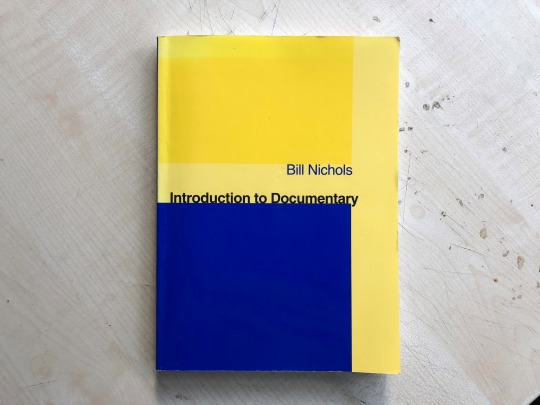
(Image 1.2 'A researched copy of Introduction to Documentary by Bill Nichols, donated by Helsinki University library to us)
Supportive literature on filmmaking
In the course of preparation for initial documentary enquiry, we were suggested some useful readings, particularly Introduction to Documentary by Bill Nichols published in 2001, which text provides an up-to-date introduction to the most important issues in documentary history and criticism. Bill Nichols is a pioneering film theoretician and critic and internationally recognised for his extensive research of contemporary documentary film with his first publication Representing Reality: Issues and Concepts in Documentary in 1991, which combined contemporary film theories to the study of documentary film for the first time.[3] If we could describe the book in a short sentence, the chapters are based on specific questions suggesting definitions of documentary, ethics, main common types or strategies to structure as well as providing some significant examples of films to reflect on. It is quite easy to read for amateurs and students that haven’t studied film before with clear descriptions and supportive visual examples along the text that help to define the elevated pitch of the documentary and inform about filmmaking historic background.
The modes of documentary
Initially, it was very important to determine the type of the architecture documentary, which will correspond to the objective of our outlined research aim and its goals. Several various architecture documentaries have been examined prior to explore possible means of representing the building narrative and its polarising opinions in film media format. According to Shot by Shot: A Practical Guide to Filmmaking by John Cantine, Susan Howard & Brady Lewis, the essential definition of documentary film:
‘In its most basic sense a documentary is a film in which the filmmaker allows the action or events to unfold naturally with minimal interference…The very process involved in making a film requires that the artist manipulate the subject material to some extent. Differences in documentary style are often a matter of the degree of manipulation the filmmaker chooses to impose’.[4]
The first import moment is to identify the type or style of the documentary. According to studies Introduction to Documentary by Bill Nichols, documentary movie has six main modes of representation, which function something like sub-genres such as ‘poetic, expository, participatory, observational, reflexive and performative, although the movie can incorporate several modes at the same time under one dominant theme.[5] Poetic mode is characterised by artistically ‘representing reality in terms of a series of fragments, subjective impressions, incoherent acts and loose associations’ while expository mode ‘assembles fragments of the historical world in rhetorical or argumentive’ that makes the main agenda of the film objective and well-argumented.[6],[7] Jonathan Meades documentaries on architecture and food, which will be introduced earlier, have a certain blend between these two modes, which depict well-structured and historically/factually supported argument with inclusion of random artistic acts.
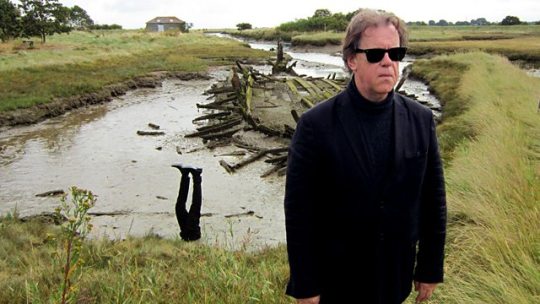
(Image 1.3 'Visually impressive and typically idiosyncratic program, Meades provides a historical and architectural tour of Sussex')
Observational mode is ‘giving sense of the duration of actual events’ with no visible participation into the scene.[8] For example, the footage incorporated into ‘rough cut’ from design Charrette can be considered as an example of this mode that focuses on the individual’s actions like making drawings or filming conversations without any intervention of filmmaker. Participatory mode is about the close interaction of filmmaker with the subject of film study, a mode that ‘expect to witness the historical world as represented by someone who actively engages with’.[9] In this case the researcher is seen as taking a part of the process and reflects on this experience, or use one-to-one interview with the subject in the course of event. For example, in the course of talking about concrete preservation methods for Dunelm House, it could be depicted as a life demonstration to one of our researchers.
Reflexive mode is similar to Participatory with depicting ‘processes of negotiation between filmmaker and viewer’, but alike in Observational mode there is no intervention of film maker in the frame, in which the main focus is not about the subject, but related to subject’s problems or issues of representing it.[10] In other words, it is about filmmaker being self-conscious and self-questioning throughout the storyline. Finally, the most ambiguous Performative mode raises questions about what is knowledge beside factual information, where the filmmaker constructs deeply personal and rather subjective ‘truths’ that are more important to himself, making it less about persuasion of viewers.[11] Early definition of the type or types can help us to choose particular artistic or visual modes of representation form of the final film production, which we can also adopt from studying other notable examples of recent architecture documentaries.
Precedence
In the course of our research, we have been examining some examples of architecture documentaries, which were published earlier such as critical analysis of The Buildings That Shaped Britain by Simon Thurley. Here, we are going to introduce a few reviews of other documentary films and identify which modes of documentary they represent according to theoretical readings from Bill Nichols book.
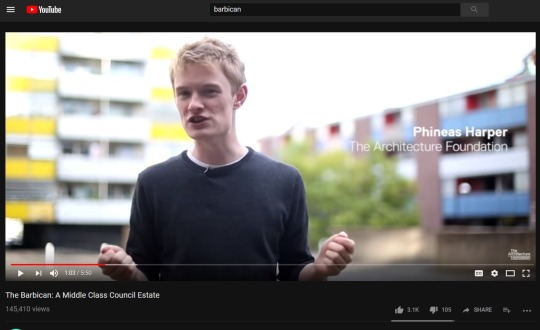
(Image 1.4 'The documentary is fully presented by Phineas Harper, who is exploring the estate in person)
The first documentary film was The Barbican: A Middle-Class Council Estate, written and presented by Phineas Harper and co-produced by Architecture Foundation & The Architecture Review.[12] As an example of a relatively short 6-minute documentary, it is based around a single building briefly covering its architects, possible references, construction in order to deliver a message of its present architectural significance. Although the proposed narrative of our research is based on contrasting various case studies around Save Dunelm House preservation campaign, what has been noted from that film was the use of rich visual line of clips and close up images of Barbican architectural elements to highlight its architectural ‘poetical’ references with remains of London’s medieval castle wall that runs across the site, which could be potentially useful in delivering the significance of Dunelm House in its rich historic context of UNESCO-protected city of Durham. The other notable detail is dramatic and factual introduction without revealing the subject until the very last minute, supported with stimulating soundtrack. This film is clearly an example of Expository mode of the documentary.
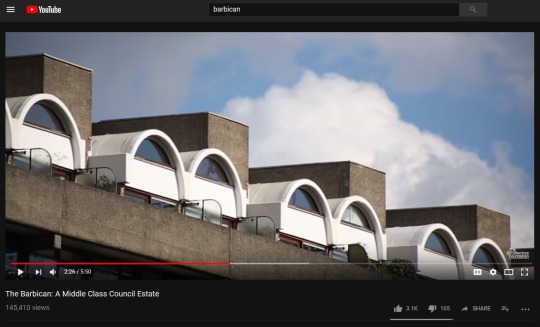

(Image 1.5 & 1.6 'Visual referencing helps to link the background discussion of influences on modern design from existing vernacular elements of Barbican wall)
The second contrasting documentary example was Jonathan Meades’ two-part piece 'Bunkers, Brutalism, Bloody-Mindedness: Concrete Poetry' for BBC4 Channel in 2014.[13],[14] A bit predisposed, very artsy and sometimes even goofy, it manages to introduce the topic of Brutalism in a very engaging for unprofessional public eye way through culturalimaginary of provocative film pieces that would not leave you bored in any second.

(Image 1.7 'Meades is always present throughout the whole documentary)
The art critic Fisun Güner noted on Meades’s film that ‘his hauteur goes so aggressively against current television convention’ praising his ability to present the facts ‘without being too explicit at the cost of being naïve’ in his quite personal conception on heritage and its preservation.[15] The value of this example is undoubtedly in Meades’s artistic ability to deliver the message of past and current preservation policies to wider masses in a less obstructive or overly academic way, introducing some elements of random visual spectacle into the story that personally trills and excites. This film can be considered between Expository and Poetic modes, where the first one is focusing on defending brutalism with rich enquiry of historic facts and supporting examples, while the second mode is bringing rather astonishing and provocative footage out of the context to artistically pursue the main argument.
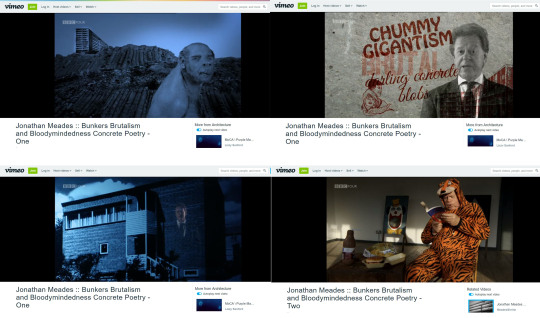
(Image 1.8 'These series of screenshots represent the complexity & contradiction of visual language that Meades is using to present his argument )
The third investigated documentary is an episode from English Heritage - Romancing the Stone filmed by BBC2 from Patrick Forbes in 2009 as a part of series that celebrate the conservation organisation’s efforts and dedication to various listed architecture in Britain. It has been the most relevant example of film that focuses on agencies that were involved in ongoing preservation measures of the largest listed Brutalist building in Europe – Park Hill ex-council estate in Sheffield.
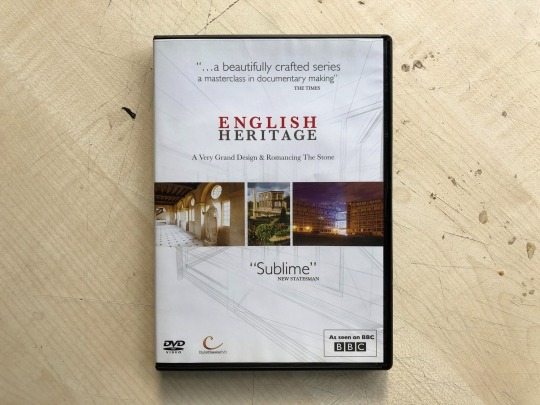
(Image 1.9 'English Heritage documentary DVD with episode Romancing the Stone about Park Hill was purchased for study as it was not available online)
According to architecture critic Owen Hatherley, the documentary’s general storyline is based on amusing tensions and questionable compromises between the EH conservation expert insisting on particular expensive concrete preservation method and then giving up, the Studio Egret West architect proposing a new tacky coloured aluminium façade resulting in stripping the existing façade and the Urban Splash developer, who is shown to be only worried about the cost of those suggested measures and profits from their investment especially after economic recession that coincided with this regeneration project.[16] While the BBC2 film was initially aiming to signify conservation duties of English Heritage with other agencies involved in four independent architectural case studies, the Romancing the Stone certainly succeed in raising questions about the attitude of both organisations involved in Park Hill preservation as Brutalist heritage attracting critical opinions from notable architecture journalists and campaigners from the C20 society. This documentary floats between Participatory since the speaker himself is present at the reconstruction site and Observational mode that focuses on real confrontations between agencies without filmmaker’s interference. In is also worth mentioning that chairman of Urban Splash Tom Bloxham released his personal account on BBC’s film, where he stated his discouragement with rather antagonistic portrayal of two major agencies involved into the project and ‘hoping that the next Park hill documentary will be more positive’.[17]

(Image 1.10 'The documentary was quite honest in demonstrating arguments between various agencies such as Urban Splash chief contractor vs concrete expert from English Heritage, who refuses to invest organization's funds into the scheme if the concrete will be painted over to cut restoration costs'
Therefore, Participatory mode of this film could be adopted as a dominating model for our research documentary, which expresses the intention of both - Save Dunelm House activists and detractors from Durham University estates team without openly suggesting a side to the viewer. On the contrary, representing and experiencing all involved into campaign agencies through series of conducted interviews aims to inform the audience to pick their own side of the main argument, especially if participant’s positions seem rather subjective or debatable.
Educational benefits of documentary
A Documentary film as an introduced form of Linked Research project shall encourage critical thinking, if specifically, in our case – learning the wider context of agencies and their duties in various examples of campaigns for modernist buildings, and discovering facts and methods that can eliminate many superstitions about the existing issue as well as try to address where are they coming from. The other important skill is narrative building that is very useful to creating a storyline not only for the film, but quite possibly for architecture project thesis. Learning filmmaking technical skills is also a beneficial part of the thesis project, which can be useful mean in presentation of architectural ideas and concepts through video format and not necessarily documentary. Charlotte Skene-Catling, the co-founder of architecture studio and organiser of Archfilmfest in London, believes that ‘the symbiosis of architecture and film is very much the future’ which results in architecture universities training students in filmmaking introducing CGI and 3D modelling new technologies from different perspective.[18] Indeed, the support to her words can be found in three recent 2017 RIBA President Medal winners, who produced short animated films for their thesis project narrative.[19] Finally, our documentary can be potentially presented at architecture festivals increasing more attention of other enthusiasts to current problem of preserving modernist heritage in the UK.
Reference list
[1]https://www.theguardian.com/tv-and-radio/tvandradioblog/2014/feb/04/brief-history-architecture-tv-nation-builders-bbc
[2] http://www.documentarytube.com/articles/how-documentary-films-benefit-the-world
[3] https://www.goodreads.com/author/show/9010.Bill_Nichols
[4] https://www.ijlter.org/index.php/ijlter/article/viewFile/601/311 p.36
Cantine, J., Howard, S., & Lewis, B. (2000). Shot by shot: A practical guide to filmmaking (3rd ed.). Pittsburgh, PA: Pittsburgh Filmmakers. P.14
[5] Introduction to Documentary by Bill Nichols, ‘What types of Documentaries Are There?’, p.99
[6] Introduction to Documentary by Bill Nichols, ‘What types of Documentaries Are There?’, p.103
[7] Introduction to Documentary by Bill Nichols, ‘What types of Documentaries Are There?’, p.105
[8] Introduction to Documentary by Bill Nichols, ‘What types of Documentaries Are There?’, p.110-112
[9] Introduction to Documentary by Bill Nichols, ‘What types of Documentaries Are There?’, p.116
[10] Introduction to Documentary by Bill Nichols, ‘What types of Documentaries Are There?’, p.125
[11] Introduction to Documentary by Bill Nichols, ‘What types of Documentaries Are There?’, p.130
[12] https://www.youtube.com/watch?v=FFDpqRxym_A&t=220s
[13] https://vimeo.com/93963469
[14] https://vimeo.com/93116236
[15] https://theartsdesk.com/tv/bunkers-brutalism-and-bloody%C2%ADmindedness-concrete-poetry-bbc-four
[16] https://www.theguardian.com/artanddesign/2009/may/02/architecture-brutalism-park-hill
[17] http://www.urbansplash.co.uk/blog/category/bbc
[18] https://www.dezeen.com/2017/12/22/architecture-film-movies-genre-in-the-making-festivals-multiply/
[19] https://www.dezeen.com/2017/12/06/royal-institute-british-architects-student-medals-2017-news-awards-uk/
Other researched links
Framing representations: Documentary filmmaking as research inquiry (Research paper)
http://www.academia.edu/1166130/Framing_representations_Documentary_filmmaking_as_research_inquiry
Digital Video as Research Practice: Methodology for the Millennium (Research paper)
https://files.eric.ed.gov/fulltext/EJ805391.pdf
A brief history of architecture on TV (Article)
https://www.theguardian.com/tv-and-radio/tvandradioblog/2014/feb/04/brief-history-architecture-tv-nation-builders-bbc
Architectural documentaries on British television: introduction (Research paper)
https://academic.oup.com/screen/article-abstract/59/1/99/4937788
Architecture film is "a genre in the making" as festivals multiply (Article)
https://www.dezeen.com/2017/12/22/architecture-film-movies-genre-in-the-making-festivals-multiply/
Activist documentaries: Preaching to the converted? (Article)
http://www.bbc.com/culture/story/20140423-preaching-to-the-converted
How Social Media has Changed the Game for Documentary Filmmaking (Article)
https://mashable.com/2010/09/21/documentaries-social-media/#3LhA8WbmGiqF
Image list
1.1 - https://www.theguardian.com/tv-and-radio/tvandradioblog/2014/feb/04/brief-history-architecture-tv-nation-builders-bbc
1.2 - Author's photograph
1.3 - https://www.bbc.co.uk/programmes/b01qfr95
1.4 - https://www.youtube.com/watch?v=FFDpqRxym_A&t=220s (screenshot from documentary)
1.5 - https://www.youtube.com/watch?v=FFDpqRxym_A&t=220s (screenshot from documentary)
1.6 - https://www.youtube.com/watch?v=FFDpqRxym_A&t=220s (screenshot from documentary)
1.7 - https://vimeo.com/93116236 (screenshot from documentary)
1.8 - https://vimeo.com/93116236 (screenshot from documentary)
1.9 - Author's photograph
1.10 - English Heritage DVD, Episode 2 'Romancing the Stone' filmed by BBC2
...
0 notes
Text
Inbox Blueprint Login
This module will highlight several of one of the most important methods to improve your email delivery as well as attract even more people to open your e-mails. There will certainly likewise be https://www.bucketlistly.com/users/abernathylundqvist72 in order to help improve your writing. You will certainly locate a quick comparison of fancy vs straightforward templates. Actually, fancy themes are not really needed to become successful with e-mail advertising. It will certainly be truly distracting to your clients. The best thing is to maintain the focus of your visitors on your content and get them to take action.
Use A/B testing of various subject lines to evaluate effectiveness.This supplies a basic way of seeing which subject lines garner higher open your messages and also which obtain overlooked. Benefit 2: Traffic Academy Membership Launch Pad: Build 10 Businesses with 100% Automation.
Is absolutely when I first observed concerning Anik Singal, mail advertising and the initial Inbox Blueprint. I remember like it was last night because it was the very first time I had actually established a true "Aha!" second online. A minute when I discovered that all my online efforts were ineffective due to the fact that they were missing a key component, email.
Member forum, a place where you can share as well as speak with other inboxes Component 2: Opt-In Pages Have a page on your site. This will permit you to trade banner relate to the businesses that you have contact with. This will certainly assist you with positions as well as is relatively basic.
Several community services prefer to collaborate with independent companies compared to big businesses due to the fact that they're much more adaptable and can likewise customize their solutions. This provides home businesses a side over the bigger man.
The inbox blueprint reviews will set uo totally free. When to utilize single and when to use dual opt-in web pages? Very same thing for autoreponder e-mail and also solo advertisements. But at some point, after experiencing the entire Inbox Blueprint program in detail, after that my perception of this program altered significantly.
However, suppose blueprint 2 decide to perform a project once and have it compete cost-free for monthly, year or 10 years? That's just what is possible with my Fourth incentive "Provided for on your own Search Engine Optimization Web traffic. inch It really is where I build the initial Search Engine Optimization advertising campaign to your page or website for natural and also all-natural website traffic. Ideal benefit? Organic web traffic is most traffic away there with conversation prices from 30% to 74% based on my very own stats.
Anik Singal's Inbox Blueprint filled with the Launching pad and my rewards will provide you a competitive benefit deal 99% of on the internet income earners. Simply picture what being one of the leading earners online would suggest to you. A brand-new home? An auto? More holiday time with your suched as ones? Now make that a truth!
Real examples of very performing opt-in pages will assist you to visualize the whole situation in a better means. The information given on "natural centerpieces" will assist you to discover the main points that individuals concentrate upon after arriving on an opt-in page.
0 notes